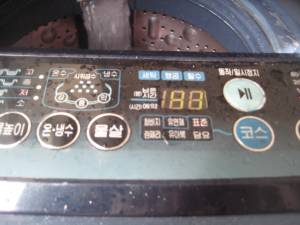We finally took the trash out last night. We are unsure as to whether or not we did it properly, but we did it! Hopefully we do not get arrested.Trash here is very tricky because nobody follows the rules, so everybody has been grounded. Us, too, even though we weren't here when the initial rule breaking happened. Totally unfair.
You have four trash categories:
- Biological
- Metal
- Paper
- Plastic
And then furniture, but... that doesn't really count since it doesn't fit in a trash bag.
Everyone was supposed to separate their trash into these groups and then place their trash bags into the respective cans, which were located on every street. But, no one liked to do it.
And, for a long time, no one did, which is never a good idea in Korea.
So, the government took action, putting, "The Mirror of Shame" up behind each trash can. Naturally, this was designed to cause each person who broke the trash separation rule to feel such shame that they would want to take apart their trash right there on the curb and separate it.
But, mostly, it just gave each person an opportunity to groom themselves.
This, of course, did not delight the government (it delights me, I think it's awesome).
So, we all got grounded and they took away ALL trash cans from the street -- indefinitely.
Making rules about trash very hazey.
But, I think we've finally got it down.Trash days are Wednesday and Friday and we can just leave stuff on the street if we sneak it down when no one is looking. I don't yet understand the sneaking, but I don't dare not sneak for fear of getting caught. I don't know why I'm afraid of getting caught if this is just the way it's done, but I, for one, don't like to mess around with the Korean government, especially not on such an apparently sore subject.
In other news, the apartment is becoming much cleaner.
When I got here, the wood slat patterned linoleum (it's quite a convincing pattern) was covered --
covered -- in slime and stick and crumbs and dirt (and cockroaches). And this was
after Ben had swept and mopped it! The cabinets had sticky, yellow grease splatters on their fronts and sides and hard, green mold on their handles. The fridge looked like a hairy tomato had climbed inside for a shave and then exploded (weird, but surprisingly true...). There were cockroaches (though since we put out hotels, we're just finding them dead on their backs) and the bathroom smelled like the sourest of sour bath towels mixed with... I don't know... rotting flesh?
It was delicious.
Since then, I have sparkled the kitchen (two days worth of work) and we revamped the bathroom by pouring nearly a full bottle of bleach down the drain. I spent ALL day -- from 2pm when Ben went to work until 9pm -- scrubbing and spraying bleach and wiping down.Now the kitchen is mostly clean and the main room's floors are done, plus our shoe room is clean and the bathroom is liveable -- though we are having to pour bleach down the drain daily right now, as well as spraying the walls with bleach after every shower.
You still can't walk barefoot inside your own house, but that's just the way it is. Nobody can. That's why we all have built in shoe rooms.
All your shoes live in this little entry way between the front door and front front door and everybody has a pair of slippers that are kept there, too. On your way in, you take off your shoes, put them in this little closet there in the shoe room, and then put on your house slippers, and on your way out, you do the opposite.
When I first got here, I thought that was just paranoia, but now I know better. The streets outside are sick. It's common practice to use them as a bathroom (there just aren't many public ones), people spit in them; the gutters are a bad, bad place. And all that gets tracked inside on our shoes.
It is for this reason that most of the restaurants and even some shops are raised up higher than their entryways. You slip your shoes off in the entryway, and then step up into the shop in your sock feet.
I like it.
We also have veranda shoes and shower shoes. The shower shoes are just because no one wants to step on their own bathroom floor (I certainly don't want to step on mine). And the veranda shoes...
Well, everybody has either a veranda or an outside portion of their house. We have a veranda. I like the word, "veranda". I think it sounds nice, and a little affluent, or at least upscale. But our veranda is not nice, like you might think.
It is where keep our washing machine.
In America, you put your clothes in the washing machine and then you hit some buttons and you walk away, coming back 45 minutes later or so to find spun clothes, ready for the dryer.
In Korea, you have choices to make.
First you have to decide whether you want hot water or cold water. If you want hot water, you need to switch the hose to the other spicket and screw it on. For this reason, we have decided never to want hot water.
Then you need to turn the spicket on, which is a trip because it sprays you in the face. So, before you turn it on, you need to make sure there are no clothes hanging on the clothesline that will be sprayed, and then you need to lift the washing machine lid and balance it -- just so -- so that you don't get sprayed in the face.
Then you have to wait until the washing machine fills because you have to turn the water off or the machine will overflow.
THEN... you have to start hitting buttons. God only knows which one is right because we can't read Korea, but it seems like hitting this one button on the far left hand side works. You just have to hit it a lot, leaving enough space between each poke to make sure that the machine's not going start, because there's nothing more frustrating than getting the machine to start and then, because you're on autopilot, hitting the button again and stopping the machine so that you have to hit it a million times all over again.
Then.......... you have to be careful not to slip when you walk out onto the veranda for the rest of the day so that you don't slip because the water from the washer drains through a tube onto the tiled floor and then through a drain in the center.That's why the veranda shoes. Because nobody wants dirty washing machine water anywhere in their house, but if you have to have it on the veranda, you sure as heck want to keep it quarantined there.Also, the verandas all have giant, screened windows from floor to ceiling so that you can open them to get air circulating and dry your clothes faster (it doesn't do much -- still takes half a year for stuff to dry), but what it mostly does is allow dirt, dust and pollution into the house to mix with the dirty, floor water.But.. I'm actually having quite a bit of fun. I like the difference and there's something about having to work to make things happen. Washing clothes is a huge ordeal, but all that means is that you feel really accomplished once it's finally done and you watch to keep your clothes clean for longer because you have to wash them a day or two in advance of wearing them to allow for drying time.Anyhow, I walked down to Family Mart for some coffee and breakfast cookies before I started typing, and I really want to ice the coffee and eat breakfast, so...I'll post pictures next time. We have a few of the market and other stuff.- catie
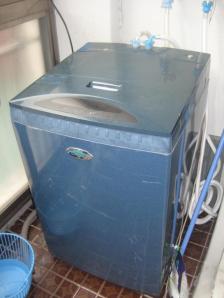 [/caption]
[/caption]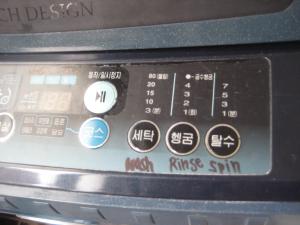 [/caption]
[/caption]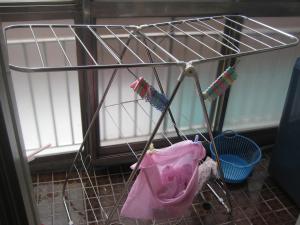 [/caption]
[/caption]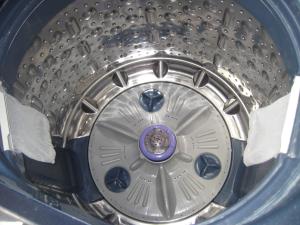 [/caption]
[/caption]
